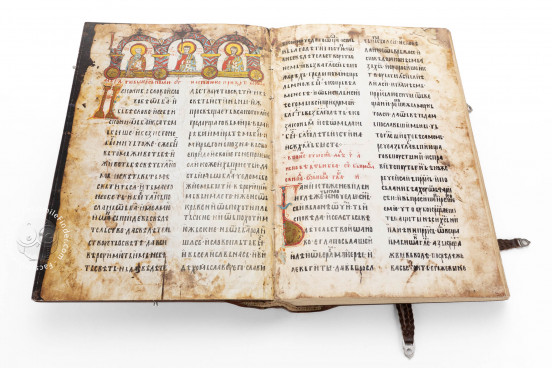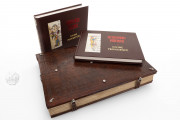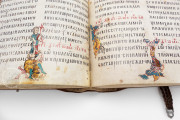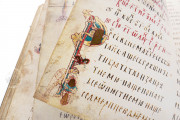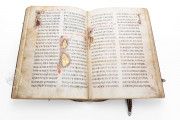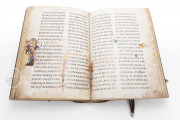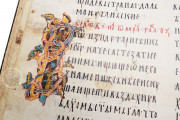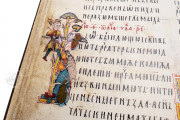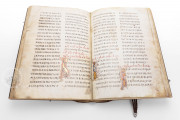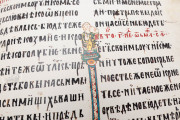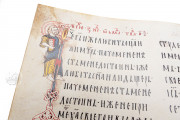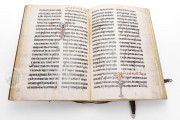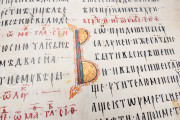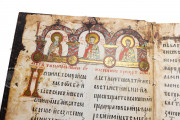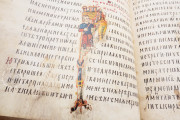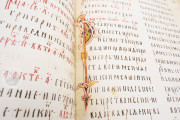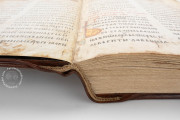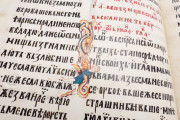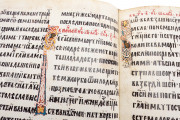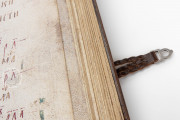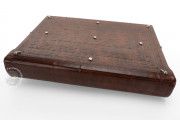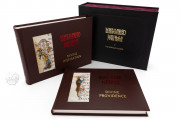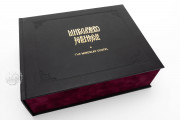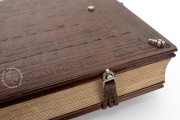The Miroslav Gospel is one of the oldest and most significant manuscripts of Serbian medieval culture, dating from approximately 1180. This illuminated manuscript, written in Old Church Slavonic with Cyrillic script, represents a pivotal monument in Slavic literary heritage and Orthodox religious tradition. With its parchment folios adorned with intricate miniatures and decorative initials, the Miroslav Gospel stands as a testament to the artistic and calligraphic mastery of its time. Its exceptional historical, artistic, and cultural value has earned it recognition as part of UNESCO's Memory of the World Register since 2005.
Historical Context and Origin
The Miroslav Gospel was created during a period of cultural flourishing in the medieval Serbian state of Hum (now Herzegovina), commissioned by Prince Miroslav, the brother of Stefan Nemanja, the Grand Prince of Serbia. The manuscript was produced for the Church of St. Peter in Bijelo Polje (in present-day Montenegro), where Prince Miroslav ruled.
This period marked the early formation of Serbian national identity and the strengthening of Orthodox Christian traditions in the region, making the Gospel both a religious text and a symbol of emerging Serbian statehood and cultural independence.
Creators and Craftsmanship
The manuscript reveals the work of at least two distinct hands. The main scribe, Deacon Gregorije (Gregory), completed the majority of the text and signed his name within the manuscript. A second scribe, believed to be Varsameleon, contributed approximately 16 folios.
The illuminations display a blend of Romanesque Western European artistic influences with Byzantine traditions, creating a unique stylistic synthesis that reflects the geographical and cultural position of medieval Serbia between East and West. The manuscript contains nearly 300 decorative initials and numerous miniatures, all executed with remarkable skill and attention to detail, using a vibrant palette of red, blue, green, and gold.
Physical Characteristics and Content
The Miroslav Gospel is a liturgical book containing readings from the Gospels arranged according to the Orthodox Church calendar for use during services throughout the year. Written on parchment in a two-column layout, the text is inscribed in the Cyrillic script of the Zeta-Hum recension, representing an important stage in the development of the Serbian redaction of Old Church Slavonic.
The ornate decorative elements include elaborate headpieces, intricate initials with zoomorphic and anthropomorphic motifs, and miniatures depicting religious scenes and figures.
Historical Journey and Preservation
The Miroslav Gospel's journey through history is as remarkable as the manuscript itself. After serving its liturgical purpose for centuries in the Church of St. Peter, the manuscript eventually made its way to the Hilandar Monastery on Mount Athos in Greece. In 1896, it was presented as a gift to King Alexander Obrenović during his visit to the monastery. Following this, it became part of the Royal Library in Belgrade. During World War II, the manuscript survived potential destruction when it was hidden in a monastery in Montenegro.
After changing hands several times throughout turbulent periods of European history, the manuscript found its permanent home in the National Museum of Serbia in Belgrade, where it continues to be preserved.
Cultural Significance and Legacy
The Miroslav Gospel stands as a crucial document in understanding the development of Slavic literacy, art, and cultural identity. As one of the oldest surviving Cyrillic manuscripts, it provides invaluable insights into the early development of the Serbian language and literary tradition. The distinctive artistic style of its illuminations demonstrates the creative synthesis of Eastern and Western artistic conventions that characterized medieval Serbian culture.
The manuscript has become a symbol of Serbian national heritage and has influenced generations of scholars, artists, and calligraphers. Its inscription in UNESCO's Memory of the World Register in 2005 affirms its universal value as a masterpiece of human creative genius and a witness to pivotal moments in European cultural history.
We have 2 facsimiles of the manuscript "Miroslav Gospel":
- Miroslav Gospel facsimile edition published by AIZ Dosije, 2019
- Miroslavljevo Jevanđelje : Fototipsko Izdanje facsimile edition published by AIZ Dosije, 1998

